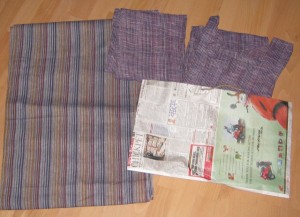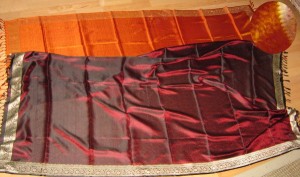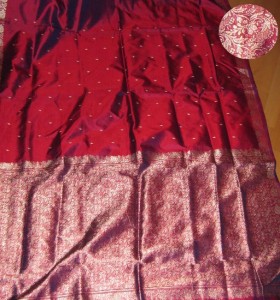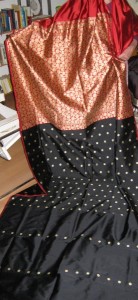Shopping in India (Part 3)
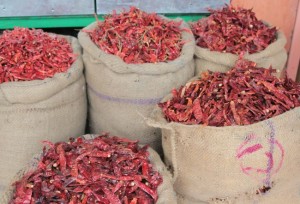 Was tun jetzt aber diejenigen, die sagen “Handeln kann ich nicht, will ich nicht, trau ich mich nicht.”?
Was tun jetzt aber diejenigen, die sagen “Handeln kann ich nicht, will ich nicht, trau ich mich nicht.”?
Nein, auch die müssen nicht ohne Souvenirs nach Hause fahren, es gibt auch Läden mit festgesetzten Preisen. Nur eben weniger.
So what about those who say “I can’t/ won’t/ don’t dare to bargain!”?
No, they do not have to go home without any souvenirs, there are shops that offer fixed prices, only the choice is smaller.
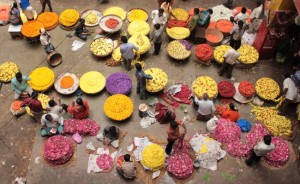 Zunächst mal sind die Händler in Indien auch nicht doof, sondern stellen sich auf die Touristen ein. An Orten mit vielen Touristen gibt es also durchaus Läden, die mit “fixed price” oder”fixed rate” auf Schildern ankündigen, daß es bei ihnen feste Preise gibt. Manchmal sogar mit Preisschild.Gerade die üblichen Souvernirs und ortstypisches Kunsthandwerk findet man so durchaus.
Zunächst mal sind die Händler in Indien auch nicht doof, sondern stellen sich auf die Touristen ein. An Orten mit vielen Touristen gibt es also durchaus Läden, die mit “fixed price” oder”fixed rate” auf Schildern ankündigen, daß es bei ihnen feste Preise gibt. Manchmal sogar mit Preisschild.Gerade die üblichen Souvernirs und ortstypisches Kunsthandwerk findet man so durchaus.
First of all: shop owners in India aren’t stupid at all. They adapt. So at places with many tourists there are often shops that have signs “fixed price” or “fixed rate” and that offer shopping without bargaining. Sometimes they even have price tags… So the supply with typical souvenirs and local craft is often available without the hassle of bargaining.
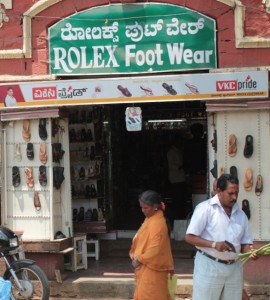 Dann gibt es in manchen modernen Städten auch richtige Shopping Malls und Supermärkte, wie wir sie auch kennen. (Bangalore gilt als besonders gute Einkaufsstadt.) Dort finden sich zum einen etliche internationale Marken, aber auch indische Designer Marken. Dabei ähnelt vieles dann auch den bei uns angebotenen Produkten, aber es gibt auch modernes Design mit traditionellen Techniken hergestellt.Fabindia ist ein Beispiel dafür.
Dann gibt es in manchen modernen Städten auch richtige Shopping Malls und Supermärkte, wie wir sie auch kennen. (Bangalore gilt als besonders gute Einkaufsstadt.) Dort finden sich zum einen etliche internationale Marken, aber auch indische Designer Marken. Dabei ähnelt vieles dann auch den bei uns angebotenen Produkten, aber es gibt auch modernes Design mit traditionellen Techniken hergestellt.Fabindia ist ein Beispiel dafür.
Then there are cities where you find supermarkets and shopping malls, similar to what we are used to. (Bangalore is known to be a good shopping place.) You find there international brands, but also Indian design and brands. And some offer an updated design with traditional crafts. Fabindia is an example for that.
 Eine andere fast immer gute und zuverlässige Adresse sind die staatlichen Souvernishops. Je nach Bundesstaat heißen sie unterschiedlich, sie sind aber im Reiseführer in der Regel verzeichnet. Dort kann man sich auch relativ sicher sein, daß man korrekte Angaben über die Produkte bekommt. Die Preise sind oft etwas über dem, was man auf dem freien Markt aushandeln kann, mir ist aber auch aufgefallen, daß zumindest bei den Textilien die Qualität oft erkennbar besser war. Zudem bekommen auch die Handwerker mehr von dem Geld. Das sind also Adressen, die ich immer gerne besuche.
Eine andere fast immer gute und zuverlässige Adresse sind die staatlichen Souvernishops. Je nach Bundesstaat heißen sie unterschiedlich, sie sind aber im Reiseführer in der Regel verzeichnet. Dort kann man sich auch relativ sicher sein, daß man korrekte Angaben über die Produkte bekommt. Die Preise sind oft etwas über dem, was man auf dem freien Markt aushandeln kann, mir ist aber auch aufgefallen, daß zumindest bei den Textilien die Qualität oft erkennbar besser war. Zudem bekommen auch die Handwerker mehr von dem Geld. Das sind also Adressen, die ich immer gerne besuche.
Usually reliable are the state souvenir shops. Names differ from state to state, but all guide books will refer to them. Also you can be relatively sure, that the information you get about the products are (mostly) correct. Price is usually a little more than what you pay (after bargaining) at normal shops for similar products. But at least for textiles my observation is, that the quality of the craft and the artistic level is higher also. Plus more of the money arrives at the crafters. So those are adresses I usually like to go.
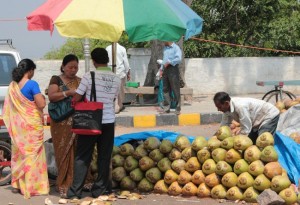 Eine weitere Organisation die ich allen Stoff-Fans ans Herz legen möchte sind die Khadi-Läden. “Khadi” bedeutet eigentlich “Baumwolle”, wobei es sich aber um handgesponnene und handgewobene Textilen handelt, die auch aus Seide oder Wolle sein können. Je nach dem, in welcher Gegend man ist haben die Läden unterschiedliche Produkte und auch unterschiedliche Techniken sind repräsentiert. Und es gibt nicht nur Saris, sondern auch viel Meterware… 🙂 Und auch hier sind die Preise fest, man muß und kann nicht handeln.
Eine weitere Organisation die ich allen Stoff-Fans ans Herz legen möchte sind die Khadi-Läden. “Khadi” bedeutet eigentlich “Baumwolle”, wobei es sich aber um handgesponnene und handgewobene Textilen handelt, die auch aus Seide oder Wolle sein können. Je nach dem, in welcher Gegend man ist haben die Läden unterschiedliche Produkte und auch unterschiedliche Techniken sind repräsentiert. Und es gibt nicht nur Saris, sondern auch viel Meterware… 🙂 Und auch hier sind die Preise fest, man muß und kann nicht handeln.
Another organisation I’d like to recommend are the Khadi-Stores. “Khadi” means “cotton” but what they carry is home made and can be also silk or wool. Usually you find regional products, so depending on where you are the cloth and the techniqes used to produce it will vary. And they have a lot of fabric by the yard… 🙂 Again here price are fixed you haven’t to bargain and you can’t.

